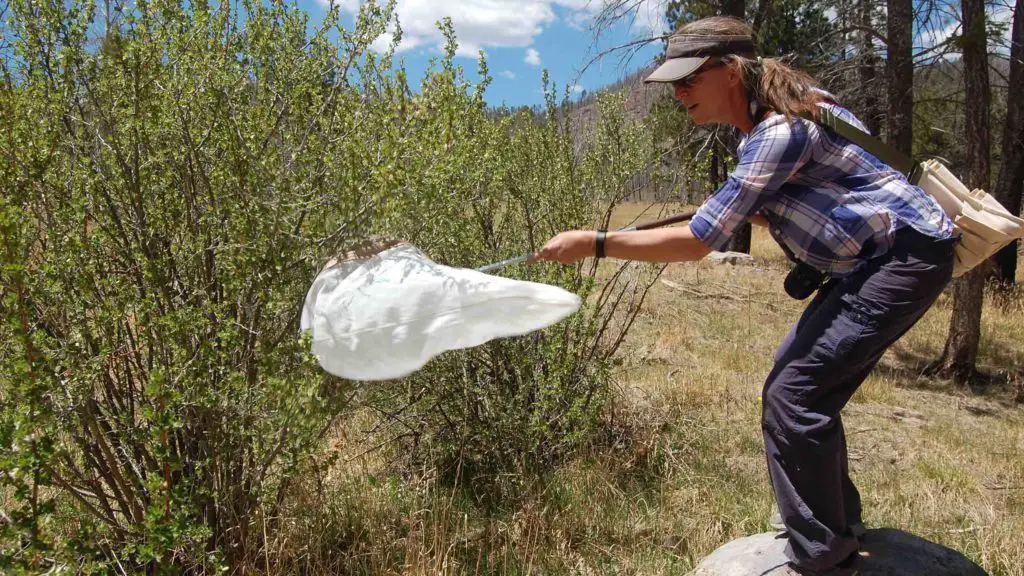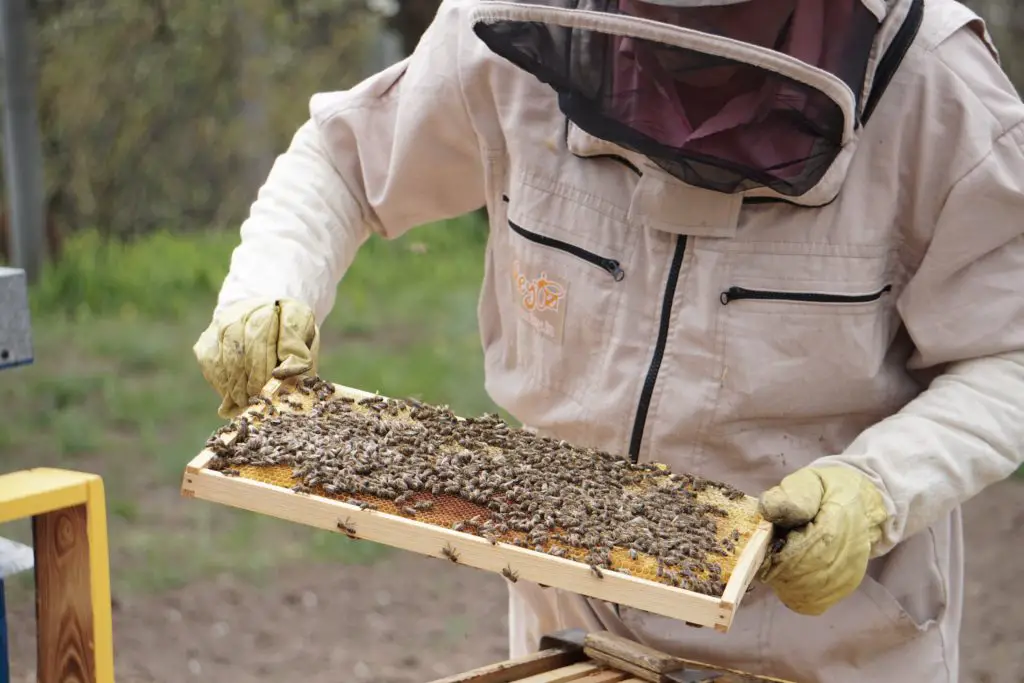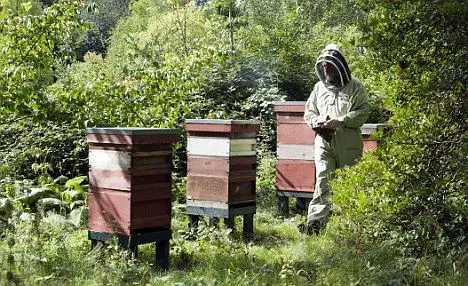Affiliate Disclaimer - As an Amazon Associate I earn from qualifying purchases.
It supports the website. So, Thank you
Bees are among some of the most important pollinators in any ecosystem. There’s been a huge movement in recent years to save the bees as there are fewer and fewer natural sources of food for them and they are not a creature we would ever want to see facing extinction.
While bees might be essential for pollinating your latest crop, butterflies may cause damage by laying eggs on the leaves. For this reason, a lot of people will cover their plants with butterfly netting to keep this problem at bay. But you’ll still want the bees to get through so can bees get through butterfly netting?
If you are growing crops that require bee pollination then butterfly netting is not the answer. The small holes on the netting usually measure around 7mm and this is too compact for a bee to get through.
Table of Contents
Why Are Butterflies A Problem For Plants?
Butterflies are beautiful, there is no denying this. However, many gardeners fear their presence for the damage that can occur to their plants as a result. What you have to keep in mind is that it isn’t necessarily the adult butterflies that harm your plants, but their young.
The cabbage white is the biggest culprit for this and they will lay eggs on the leaves of plants; particularly brassicas. The eggs themselves are known to cause damage to the leaves but it is when they hatch that the real problems begin.
You see, the caterpillars, which are black and yellow in color, feed on the leaves of these brassicas and will contaminate them with their excrement. When this problem is not treated, your plants could be severely damaged. In the worst cases, plants may be damaged beyond hope. So, while butterflies are seen as helpful pollinators in some cases, it really depends on what you are growing.
Why Are Bees Beneficial To Plants?
If you’ve not been living under a rock for the past few years, you will have seen the many Save The Bees campaigns. But if you’re not sure about the topic, you might be wondering why on earth it’s so important to care about bees in the first place. They’re just insects, right?
Not quite! Bees are an essential part of any ecosystem and without them, we wouldn’t have half of the plants we currently do. This includes fruits and vegetables that you and I rely on for food. Without bees, there is a risk of a global food shortage, as discussed in this interesting article in The Guardian.
Bees fly from flower to flower, collecting nectar which they use for food. You might think that bees are only good for making honey but as they fly from flower to flower, they are also pollinating these flowers, encouraging further growth and fruit production.
Can You Use Butterfly Nettings And Still Have Bees Pollinating?
One of the ways that many people effectively repel butterflies is to use butterfly netting. This is incredibly effective and will save your crop from a caterpillar infestation. However, you are also making it much more difficult for bees to access the plants. Most butterfly nettings don’t have holes big enough for bees to pollinate.
However, there might be ways that you can still use butterfly netting and allow bees to get in but it does require some careful planning and work. It is best to install butterfly netting before pollination begins and do keep in mind that there is a risk of bees becoming entangled in netting depending on the type so make sure you do your research and find a bee-friendly product.
When it comes to installing your butterfly netting, you’ll need to make sure that the sides can be lifted when flowering occurs. This will give the bees a way in.
It’s also worth thinking about the effects butterfly netting can have on your plants before installing it. Not only will it make life much more difficult for bees but it can raise humidity levels which could increase the likelihood of fungal infections in your plants.
How To Repel Butterflies
If you don’t like the idea of using butterfly netting owing to the problems it could cause for bees, then there are some other ways you could get rid of the butterfly population in your garden and have a healthier crop.
One of the best ways is to plant companion plants alongside or among your brassicas. These need to be plants that butterflies do not like and highly aromatic herbs work very well. Things like dill, rosemary, oregano, lemon balm, and sage are all excellent choices.
You might also choose to use a natural repellent spray which you can make using dish soap and neem oil. Neem oil is typically considered safe for bees but will prevent caterpillars from munching on the leaves so it’s a win-win all round.
If you want to take a truly natural approach to tackle your caterpillar problem then you could simply remove them from the plant by hand. This, of course, requires a little more effort but you can be sure to remove all pests.
What Plants And Vegetables Don’t Need Bees?
If the worst comes to the worst and you cannot live without butterfly netting then it might be worth considering growing plants that don’t rely on bees for pollination. The good news is that there are quite a few choices.
Some of the most common self-pollinating fruits and vegetables are tomatoes, peppers, apples, cherries, pears, and peas.
Conclusion
Having bees in your garden to pollinate your plants and vegetables is super important. But you’ll find that these same plants can also attract pests such as the cabbage white butterfly. While the butterfly itself won’t do much harm to your plants, its eggs and caterpillars can. You may have decided to put down butterfly netting but can bees get through butterfly netting?
The holes in butterfly netting are too small for bees to get through so they won’t be able to pollinate any plants covered by them.
There are other ways to prevent butterflies and ensure that bees can still access your plants for that all-important pollination.




